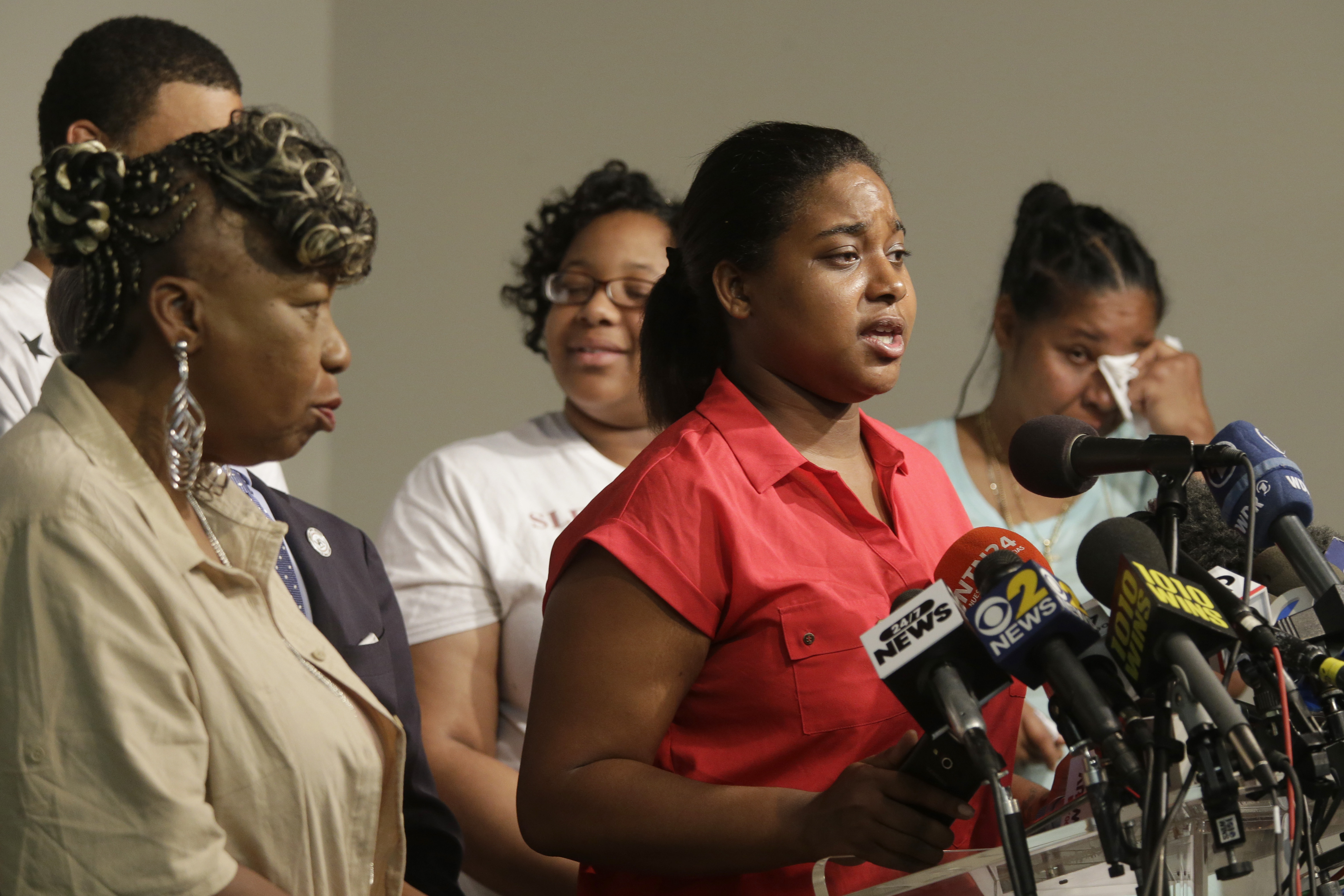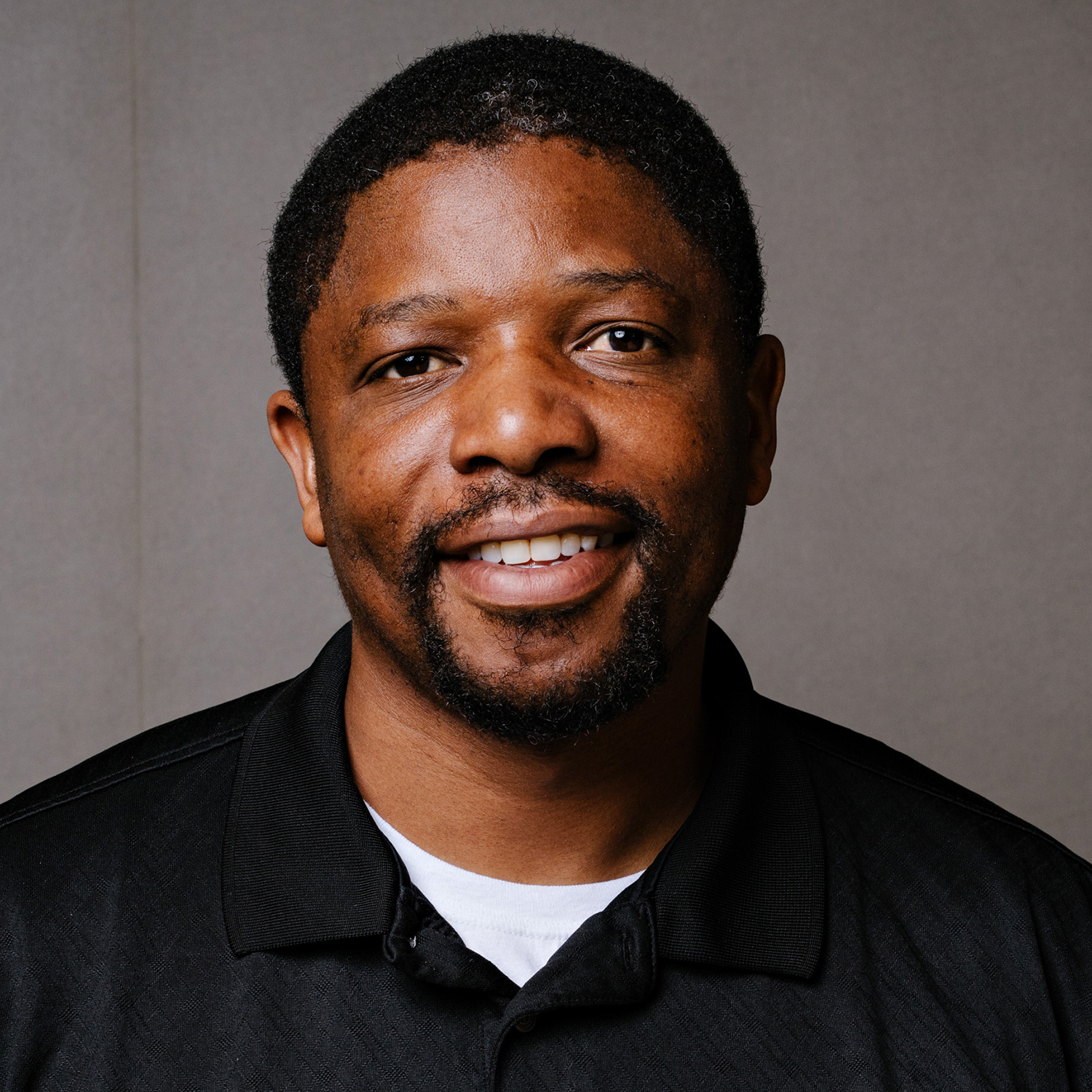
Eric Garner's daughter Erica Garner, center, is joined by family members as she speaks during a news conference in 2015. Controversy was recently sparked when, following her death in December, an associate of Erica’s requested that only black journalists reach out to her family with interview requests
An associate of Erica Garner created a firestorm by doing something editors and producers do every day: use race to help decide who gets to tell an important story. It’s just that the Garner request was blunt while race and identity are used in often unacknowledged ways inside newsrooms.
Garner was the 27-year-old daughter of Eric Garner, the man who became well-known for reasons his family wish he hadn’t. He died in 2014 while a New York police officer had him restrained in a chokehold that had been outlawed by the department. Erica Garner became an impassioned advocate for criminal justice reform after her father’s death before succumbing in December to a heart attack some believe was at least partially induced by the enormous amount of stress that came with her advocacy.
An associate of hers requested that only black journalists get in touch about interviews after she died. The request (or demand) sparked howls of reverse racism and snarky jokes on Twitter asking if Asian-Americans or Latinos could be granted half a question.
Had I been an assigning editor, I would have ignored the request. Sources cannot dictate such decisions. But the decisions we make frequently take into account race and identity, even when we pretend they don’t. It’s just that those decisions don’t begin when news breaks. The string running through that long process includes how and who we recruit; who we assign to which beats and why; and which beats are considered prestigious, which are deemed grunt work. Whose voice is most cherished in the newsroom shapes who gets to tell what stories, and which stories float to 1A.
Journalists of color often feel conflicted about race-related stories because of the newsroom environment they must navigate. Committing to telling such stories—knowing they deserve top-shelf journalistic attention—can make you feel as though you’ve effectively banished yourself to the ghetto of the newsroom because white colleagues believe they are less important than stories about politics or national security. Refusing or shying away from doing them can make you feel complicit in media that frequently distort the image of black families and other groups. Managers in newsrooms may not say “send only black journalists,” but that message gets through anyway when few resources are dedicated to developing such stories and they are treated as extras or evergreens instead of fundamental to daily coverage. That sense is further cemented when the most coveted beats have the least-diverse staff.”
And there’s something deeper at work. We haven’t fully grappled with how much we unwittingly judge journalism through a white lens. Most of us likely have an image rattling around our brains about what the “best” journalism looks and feels and sounds like. That image is built upon a traditional view. That traditional view was cultivated by white journalists who determined what was the most professional and appropriate dress, tone, and style for the airwaves, and in print. In the way that the Supreme Court isn’t final because it’s infallible, but infallible because it’s final, the accepted view of what’s great journalism has long been considered final because infallible journalists— industry leaders, often—lack the imagination to consider that there might be a better way, even if it is grating on their ears and offends the sensibilities of the grammarian within.
Many of the conclusions we come to are based on identity, and race is a major pillar of identity in the United States. That’s true even if we don’t factor in racial discrimination. It’s why recent developments in the news industry are encouraging—and worrying. The push for more diversity is healthy and must continue full speed ahead. It is that important. Representation matters. The ability to tell stories with nuance and from every relevant angle and in an authentic, unapologetic voice matters. People who live the stories have a finer appreciation for them than those who don’t. All of that is true, which is why I’m a big fan of innovations such as NPR’s “Code Switch.”
We haven’t fully grappled with how much we unwittingly judge journalism through a white lens
But that doesn’t mean only journalists of color should tell stories about people of color, particularly stories at the emotional crossroads of race and crime. Dina Temple-Raston of NPR had to dig deep into the horrific killing of James Byrd Jr. in Texas. Jill Leovy’s “Ghettoside” is a must-read. The lesson? Don’t shy away from dealing forthrightly with race—including how the race of the journalist affects the project—and commit to doing great journalism. White journalists should neither be allowed to avoid doing complex race-related stories nor use their lack of direct experience as an excuse for so frequently doing them poorly. They manage to tell compelling stories about men and women suffering from battlefield-induced PTSD without ever having experienced war. There’s no reason they can’t manage to write with empathy about the crack-addicted black single mom the way they have about the opioid-addicted poor white mother.
The irony is that in the Garner case, a white journalist did just that. Matt Taibbi of Rolling Stone spent years writing and researching “I Can’t Breathe: A Killing on Bay Street.” The book treats Eric Garner in all his complexity and humanity. It doesn’t shy away from the cultural and racial pressures that left Erica without a father. Publicity for the book has been hampered by the resurfacing of some of Taibbi’s long-ago controversial writings. It is clear he has a command of the subject like few others.
He is clear that his race complicated matters. “I think there are certainly pressures that come with being a white reporter in cases like this,” he says. “The reactions I got … ranged from anger/outrage over it as an act of cultural appropriation to sarcastic comments about how it took so long for a white reporter to bother spending so much time on the police brutality issue. … If I’d backed off this story because I was white, then I’d never have learned so much history about this kind of police violence and bureaucratic prejudice, which is largely a story about white America’s legacy. I think as journalists we should just be interested in a wide range of things. The same issues of access and empathy are going to exist in stories where race is a factor and where it isn’t.”
He also disagrees with the idea that we should start setting rules about what black and white reporters should or should not cover but still wasn’t offended by the Garner request for black journalists.
“People feel the way they feel for reasons and one has to be respectful of those,” he says. “It was and is an emotional time. I had a great relationship with Erica, and she and I became genuine friends over the years. I think she had trust issues with the media generally, especially after the Project Veritas incident.” (Garner made critical comments about the Rev. Al Sharpton during a secretly recorded conversation with conservative activists.)
One last thing to consider. There may be times when the race of a journalist makes the difference between a great story, and maybe none at all. While journalists of color— including columnists who have essentially embedded with the KKK—have done good work on stories about white supremacists, the well-received Vice documentary about Charlottesville was clearly helped because the reporter was a white, blond woman. That made the alt-right activists she interviewed feel comfortable in ways simply not available to a black male journalist like me.
That’s why, even though I still believe journalists should not have acquiesced to the Garner request, it would be unwise for us not to consider the issue from all angles. That means openly acknowledging and considering race in all its complexity as we make decisions inside newsrooms. Too often, we use race to guide decisions without even thinking it through.



